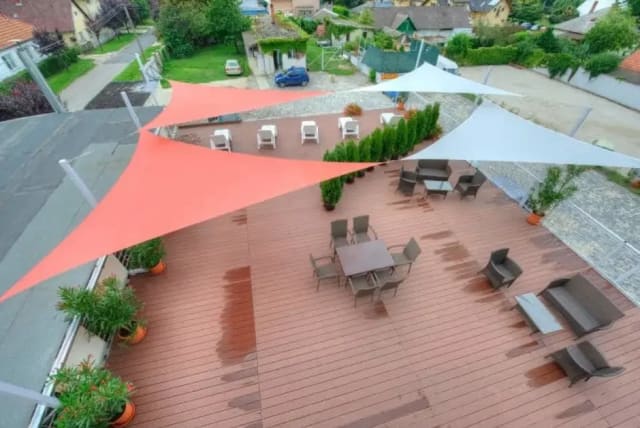Residing in a ‘greener’ environment helps heart-bypass surgery patients live longer

Researchers say that better surroundings can be a beneficial factor in recovering from trauma.
A long-term study at Tel Aviv University (TAU) that was unprecedented in its kind and scope and examined thousands of heart patients after they underwent bypass surgery found that patients who live in a “greener” environment are at a lower risk of mortality when compared to patients who live in a “non-green” environment.
Better surroundings can be a beneficial factor in recovering from trauma, the researchers said, as exposure to a green environment could be a beneficial factor in recovering from physical and psychological trauma and are particularly relevant in the current tense period in Israel.
It has just been published in the journal Psychosocial Epidemiology under the title “Residential greenness and long-term mortality among patients who underwent coronary artery bypass graft surgery.” It was conducted by doctoral student Maya Sadeh under the guidance of Prof. Rachel Dankner from the epidemiology and preventive medicine department at the School of Public Health in the Faculty of Medical and Health Sciences and Prof. Alexandra Chudnovsky from TAU’s Porter School of Environment and Earth Sciences.
Also participating were Nir Fulman, also from the Porter School; Nirit Agay and Arnona Ziv from the Gertner Institute for Epidemiology Research at Sheba Medical Center; Ilan Levy from the Environmental Protection Ministry; and Prof. Michael Brauer from the Canada’s University of British Columbia.
Studies until now have reported inverse associations between exposure to residential greenness and mortality; greenness has also been associated with better surgical recovery – but studies have had small sample sizes and been restricted just to clinical settings. “We investigated the association between exposure to residential greenness and all-cause mortality among a group of cardiac patients who underwent coronary-artery bypass graft surgery,” they wrote.
Green spaces create thriving life
The team examined the association between a greener environment, which is most likely saturated with vegetation, and the mortality rate of coronary heart patients after undergoing bypass surgery – an operation that is considered a traumatic event from both the physical and mental aspects. The study, which was carried out on thousands of patients who live all over Israel and followed them over a period of more than a decade, found that the survival rate of bypass-surgery heart patients who live in greener areas is significantly greater than those whose living environment is without greenery.
Dankner explained that “the current study was based on a database we built at the Gertner Institute about 20 years ago for another study – 3,128 heart patients who underwent bypass surgery in seven Israeli hospitals from Haifa and to Beersheba between the years 2004 and 2007. Using data from the Interior Affairs Ministry, we found that 1,442 (46%) of them died of various causes by the year 2021. In this study, we wanted to examine to what extent (if at all) the life expectancy of heart patients after surgery is associated with the amount of green vegetation in their residential area.”
The researchers cross-referenced the patients’ residential address data with data from NASA’s Landsat satellites that photograph the Earth and are able to locate the color green with a very high resolution and within a range of up to 30x30 meters from the residential address that allows identification of vegetation even within urban areas.
The researchers worked to accurately account for the amount of greenery in a radius of up to 300 meters around the address of each of the patients and placed this figure against the dates of death or survival of the patients, over 14 years from the date of surgery.
They performed a detailed statistical analysis of the data, including adjustments for a variety of variables, such as: age, sex, ethnicity, socioeconomic status, urgency of the hospitalization (elective, semi-elective, or emergency surgery), living in the periphery/center, air pollution, and living distance from the Mediterranean Sea. About 90% of the research participants lived in urban areas, 80% in the coastal plain from the center to Haifa, 15% in the Jerusalem area, and five percent in the southern Beersheba district.
“We divided the patients' residential addresses into three groups according to the amount of vegetation in their surroundings and found a clear, significant association between a green environment and their survival—that is, how many years they continued to live after the operation,” Sadeh explained.
“The results showed that during the mean time of 12 years following the operation, the risk of mortality for those who lived in a very green environment was lower on average by seven percent compared to those who live in a non-green environment. We also found that the beneficial relationship is more pronounced among women who made up 23% of the cohort and were older at the time of the surgery (69.5 years old on average) compared to men (63.8 years).”